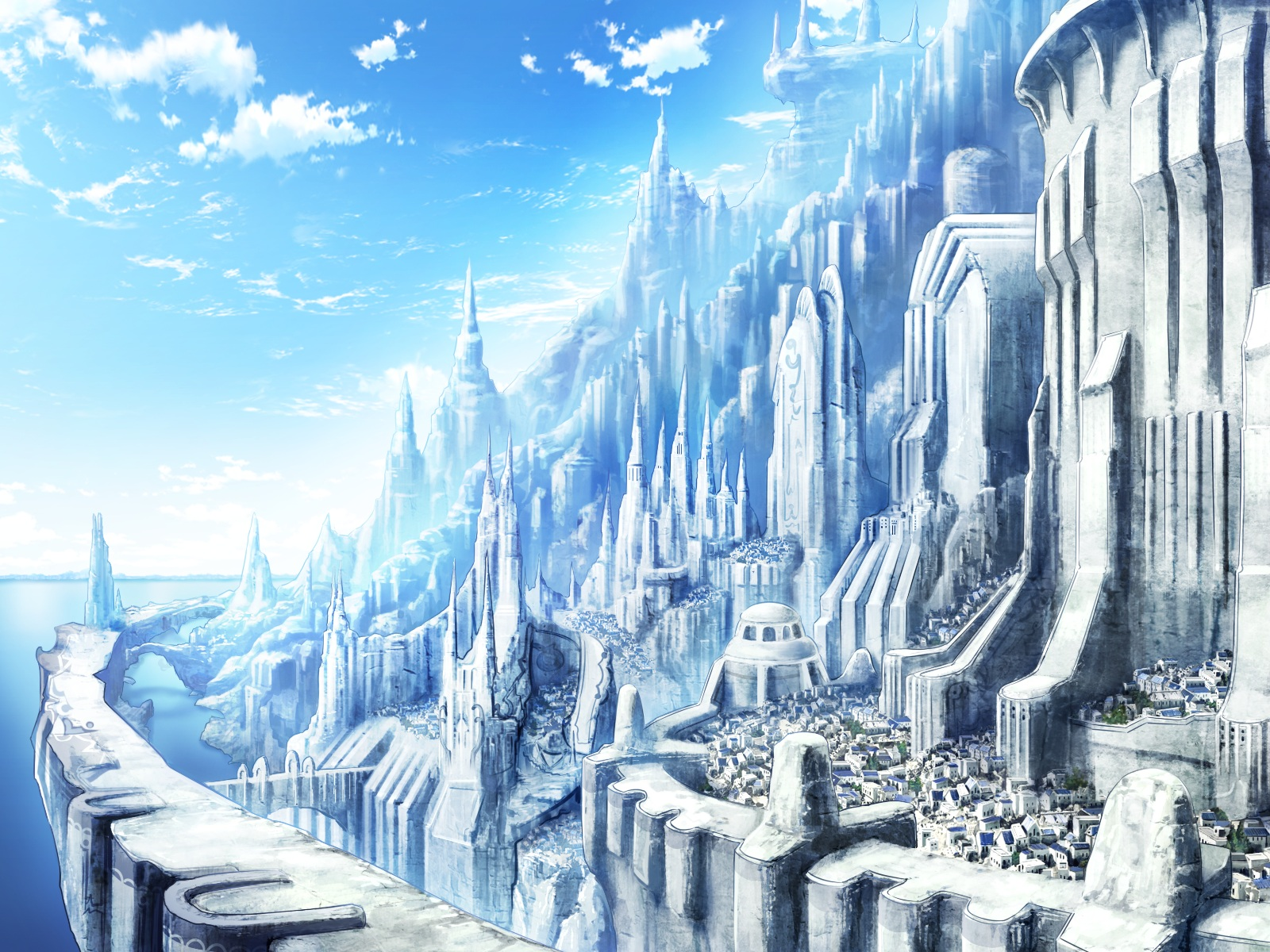Ice Mountains
Occupying most of the Kingdom of Snows, the Ice Mountains are a frigid arctic climate of snow and ice. It is a mountainous biome, which can be described as alpine tundra.
Geography
The Kingdom of Snows is home to the Ice Mountains, which contain the highest point on Etheria. The region stretches from the Frozen Depths Sea to the start of the Rocky Mountains of Geolon.
The mountain ranges date back to the days of the Ancient Ones, but the area was not inhabitable until the First One's expanded into the area.
Most of the Kingdom is built along the coast, as the water is a vital part of life in the north. Not only is the ocean used to travel in and out of the kingdom, but it also a source of food.
Ecosystem
For most of the year, the mountains of the North are a cold, frozen landscape. This biome has a short growing season, followed by harsh conditions that the plants and animals in the region need special adaptations to survive.
The kingdom typically get less than 25 centimeters (10 inches) of precipitation annually, which means it is also considered a desert. They have long, cold winters with high winds and average temperatures below freezing for six to ten months of the year. On average, only six to ten weeks of the year have sufficiently warm temperatures and long days for plant growth. The soil in the Arctic is largely permafrost or soil that remains frozen year-round, leaving only a thin surface layer of thawed soil in summer for plant roots to grow in. Tundra soil is also scarce in many of the nutrients that plants need to grow.
Aside from some pine forests at the southern border with Plumeria, the Kingdom of Snows is largely treeless. Instead, the area has patchy, low-to-ground vegetation consisting of small shrubs, grasses, mosses, sedges, and lichens, all of which are better adapted to withstand tundra conditions.
Animals in the tundra are also adapted to extreme conditions, and they take advantage of the temporary explosion of plant and insect life in the short growing season. Tundra wildlife includes small mammals such as arctic hares and arctic ground squirrels —and large mammals, such as caribou. These animals build up stores of fat to sustain and insulate them through the winter. They also have thick coats of fur for further insulation. Some save energy by hibernating during the long winter months. Others migrate to warmer climes during winter. Many birds also migrate into the tundra during the growing season to feed, mate, and nest.
Atop the food chain are tundra carnivores, such as arctic foxes, arctic wolves, snowy owls, and polar bears, which move into the tundra during the summer when prey is plentiful and their usual hunting grounds on sea ice diminish. Many animals, both predator and prey, develop white fur or feathers in the winter months for camouflage in ice and snow.
Localized Phenomena
The Northern lights, also known as the polar lights or aurora borealis is a natural light display in Etheria's sky, predominantly seen in high-latitude regions around the Kingdom of Snows. Auroras display dynamic patterns of brilliant lights that appear as curtains, rays, spirals, or dynamic flickers covering the entire sky.
It is believed that the spell, "dancing lights", was created by the Ancient Ones after studying the Northern Lights in the sky.
Alternative Name(s)
The North
Type
Tundra
Location under
Included Locations
Owner/Ruler



